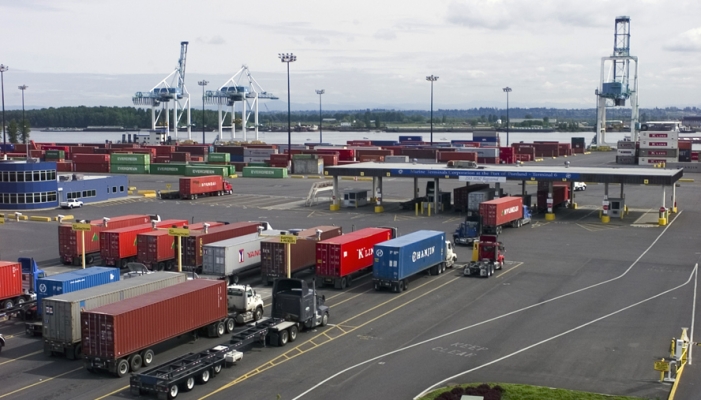View slides
Watch video:
Although it is widely claimed that Oregon's economy is dependent on freight movement, economic activity in Oregon has decoupled from physical goods movement. Truck traffic per unit of gross state product has fallen, and even the loss of regular container service to Portland has had no measurable effect on the region's economy.
Oregon's economy has shifted away from freight intensive industries and now depends on knowledge...
Read more*NEW* LOCATION: Karl Miller Center at PSU, 631 SW Harrison St., Room 465
*NEW* REGISTRATION: Sign up through GoToWebinar
PRESENTATION SLIDES
Miss the seminar or want a look back at the presentation? View the slides here.
As urban areas across the country are investing in bicycle and pedestrian infrastructure to promote environmentally sustainable transportation and to develop livable communities, many have pointed to improvements in environmental quality, economic development and public health as potential positive outcomes. While these outcomes of active transportation infrastructure are relatively well documented, it is also known that both transportation and environmental...
Read moreThe video begins at 2:09.
Abstract: The ability to fully understand and accurately characterize freight route choice is one that will support freight modeling frameworks, and regional and state transportation decisions. This ability, when combined with regional and state commodity flow data, can compose an effective statewide freight modeling framework. Typically, transportation network models take a shortest path assumption for truck routing both for strategic and operational routing decisions. The goal of this research was to determining how different subgroups of shippers, carriers, and receivers make route choices, and to understand how these approaches vary across types of routing decisions. We consider route changes of both a spatial and temporal manner. This talk presents the results of a survey of over 800 shippers, carriers, and receivers in Washington State, and recommends a framework for improving the modeling of routing decisions in existing network models.
Speaker Bio: Professor Anne Goodchild has worked and studied in the transportation field for more than 15 years. Her initial experience in management consulting for transportation providers was followed by the completion of a PhD at UC Berkeley and research experience while developing the freight transportation program at the University of Washington. In addition to a BS in mathematics and an MS and PhD in Civil Engineering, Dr....
Read moreThe video begins at 1:13.
Abstract: Brock Nelson is the Director of Public Affairs for Union Pacific Railroad. He will give a brief overview of Union Pacific, and how they go about preparing for, and responding to frequent events such as landslides and floods.
The video begins at 2:51.
Abstract: Coal-fired electricity plants account for over 50 percent of the nation’s electricity. These plants can purchase coal from a large number of different locations and, often, can have a number of different transportation options. Normally, however, from the array of different options, they use only a handful. We frame the model as that of a cost-minimization with a large number of input choices, characterized by standard Kuhn-Tucker conditions. Empirically, we estimate a system of input decisions that contain both zero and non-zero levels, using a Multiple Discrete/Continuous Extreme Value model. The payoffs from each choice are a function of costs, coal attributes, and unobserved modal attributes, as well as the increased regulation under the Clean Air Amendment Act of 1990.
View slides
Abstract: Our speaker for May 14, 2010 is Gill V. Hicks, Director Southern California Operations for Cambridge Systematics, Inc. For more than ten years, Mr. Hicks served as the General Manager of the Alameda Corridor Transportation Authority (ACTA). The $2.4 billion Alameda Corridor consolidated harbor-related railroad traffic onto a single 20-mile corridor between the ports of Los Angeles and Long Beach and the railroad mainlines near downtown Los Angeles. Mr. Hicks’ responsibilities included overall management of the agency, building consensus, estimating benefits and costs of the project, generating political support, testifying before U.S. Congress, State Legislature, regulatory bodies, city councils, funding agencies and other stakeholders; developing a financial plan, raising funds, coordinating with railroad, trucking, and shipping businesses, and managing contracts for the project.
Mr. Hicks will discuss the major challenges faced by the project, including negotiations with three competing railroads, several municipal governments, utilities, regulatory agencies, contractors, and funding entities. The process for consensus building will be discussed. Major lessons learned will be described, including methods for reducing project risk, keeping on schedule and within budget. Mr. Hicks will also touch on the challenges facing the agency as...
Read more
